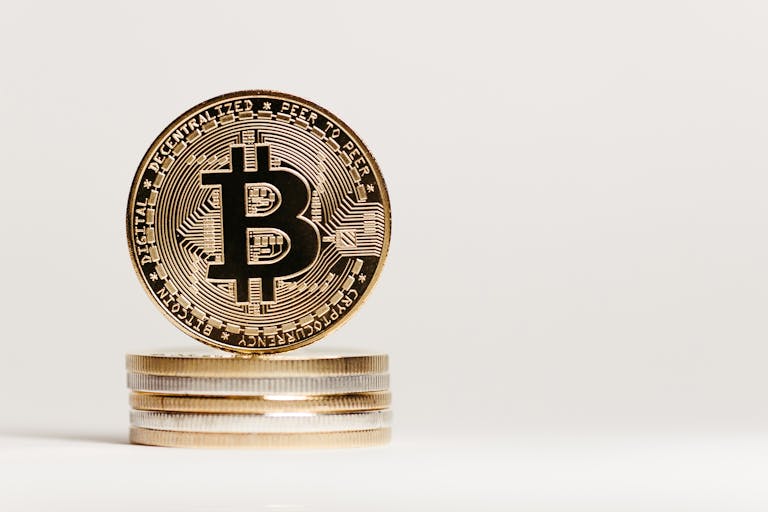How to Create a Crypto Wallet: A Step-by-Step Guide for Beginners
Creating a cryptocurrency wallet is the first step toward securely managing your digital assets. A crypto wallet is a digital tool that stores your private keys, which are essential for accessing and controlling your cryptocurrencies. Unlike traditional bank accounts, crypto wallets are not tied to a central authority, so it’s critical to understand how to set one up safely. This guide will walk you through the process of creating a crypto wallet, covering different types, security considerations, and best practices.
What is a Crypto Wallet?
A crypto wallet is a software program or hardware device that interacts with blockchain networks to store, send, and receive cryptocurrencies like Bitcoin, Ethereum, or others. It doesn’t hold your funds directly; instead, it provides access to your public address (for receiving funds) and private key (for authorizing transactions). Wallets can be categorized into several types:
-
Software Wallets (Hot Wallets):
- Mobile Wallets: Apps like MetaMask or Trust Wallet.
- Desktop Wallets: Software installed on your computer, such as Electrum (for Bitcoin).
- Web Wallets: Browser-based tools like Coinbase Wallet or Binance Wallet.
-
Hardware Wallets (Cold Wallets):
- Physical devices like Ledger or Trezor that store private keys offline.
-
Paper Wallets:
- A printed copy of your public and private keys, stored securely.
-
Custodial vs. Non-Custodial Wallets:
- Custodial: Managed by a third party (e.g., exchanges like Binance or Coinbase).
- Non-Custodial: Fully controlled by you, with no intermediaries.
Key Tip: Always prioritize non-custodial wallets for maximum control and security, especially if you plan to hold large amounts of crypto.
Step-by-Step Guide to Creating a Crypto Wallet
Step 1: Choose the Right Wallet Type
Select a wallet based on your needs:
- For frequent transactions: Use a mobile or desktop wallet (e.g., MetaMask, Trust Wallet).
- For long-term storage: Opt for a hardware wallet (e.g., Ledger Nano S, Trezor Model T).
- For simplicity: A custodial wallet (e.g., Coinbase) may be easier for beginners, but it’s less secure.
Pro Tip: Avoid sharing your private key or seed phrase with anyone. If you use a custodial wallet, you’re entrusting your assets to the service provider.
Step 2: Download and Install a Software Wallet
Example: Setting up MetaMask
- Visit the official website (https://metamask.io) or download the app from the App Store/Google Play.
- Install the extension (for desktop) or the mobile app.
- Create a new wallet:
- Choose a strong password (avoid reusing passwords).
- Confirm the security settings (e.g., enabling two-factor authentication).
- Save your Seed Phrase:
- MetaMask will generate a 12-word seed phrase (a mnemonic backup).
- Write it down on paper and store it in a secure, offline location.
- Never store it digitally or share it with anyone.
Why it matters: The seed phrase is your only way to recover your wallet if you lose access.
Step 3: Set Up a Hardware Wallet
Example: Ledger Nano S
- Purchase the hardware wallet from an authorized retailer.
- Unbox and connect the device to your computer via USB.
- Initialize the wallet:
- Follow on-screen instructions to set up a PIN.
- Generate a seed phrase (12-24 words) and write it down securely.
- Install the Ledger Live app to manage your wallet and add cryptocurrencies.
- Connect to a software wallet: Use apps like MetaMask or Trust Wallet to link your hardware wallet for transactions.
Security Note: Hardware wallets are resistant to online threats but should still be stored safely, like a physical asset.
Step 4: Back Up Your Wallet
All wallets require a backup to prevent losing your funds:
- Seed Phrase: Store it in a password-protected vault or a physical safe.
- Private Key: Avoid sharing it online or saving it in unsecured locations.
- Recovery Instructions: Familiarize yourself with the wallet’s recovery process (e.g., restoring via seed phrase).
Reminder: If you lose your backup, your crypto is lost forever.
Step 5: Add Cryptocurrencies
Once your wallet is set up, you can add crypto:
- Receive Funds: Share your public address (e.g., "0x…") with others to receive crypto.
- Send Funds: Enter the recipient’s address and confirm transactions.
- Buy Crypto: Use a partner exchange (e.g., Coinbase, Binance) to purchase crypto and transfer it to your wallet.
Example: For a hardware wallet, connect it to your computer, open Ledger Live, and add supported coins like Bitcoin or Ethereum.
Security Best Practices
- Use Two-Factor Authentication (2FA): Enable 2FA on all accounts for extra security.
- Never Share Your Seed Phrase: Even if someone claims to be a support agent, do not reveal it.
- Avoid Phishing Scams: Double-check website URLs and never click suspicious links.
- Regularly Update Software: Keep your wallet apps and devices updated to patch vulnerabilities.
- Store in Cold Storage for Long-Term Holding: For large amounts, use hardware wallets instead of hot wallets.
Common Mistakes to Avoid
- Not backing up the seed phrase.
- Using weak passwords or reusing passwords across platforms.
- Storing seed phrases online (e.g., in emails or cloud drives).
- Not verifying addresses before sending funds (e.g., double-checking for typos).
Final Tips
- Research the wallet’s reputation: Open-source wallets like Brave Wallet or Electrum are often more secure.
- Start small: Test your wallet with a tiny amount of crypto before moving larger sums.
- Be cautious with exchanges: Some platforms may have security risks, so prioritize non-custodial solutions for sensitive assets.
By following these steps and prioritizing security, you can safely create and manage your crypto wallet. Remember, the responsibility of safeguarding your funds lies entirely with you—so stay informed and vigilant!
Conclusion: Creating a crypto wallet is straightforward, but its security is non-negotiable. Whether you choose a software, hardware, or paper wallet, always ensure you understand how it works and protect your private keys diligently. With the right tools and habits, you can confidently navigate the world of cryptocurrency.






